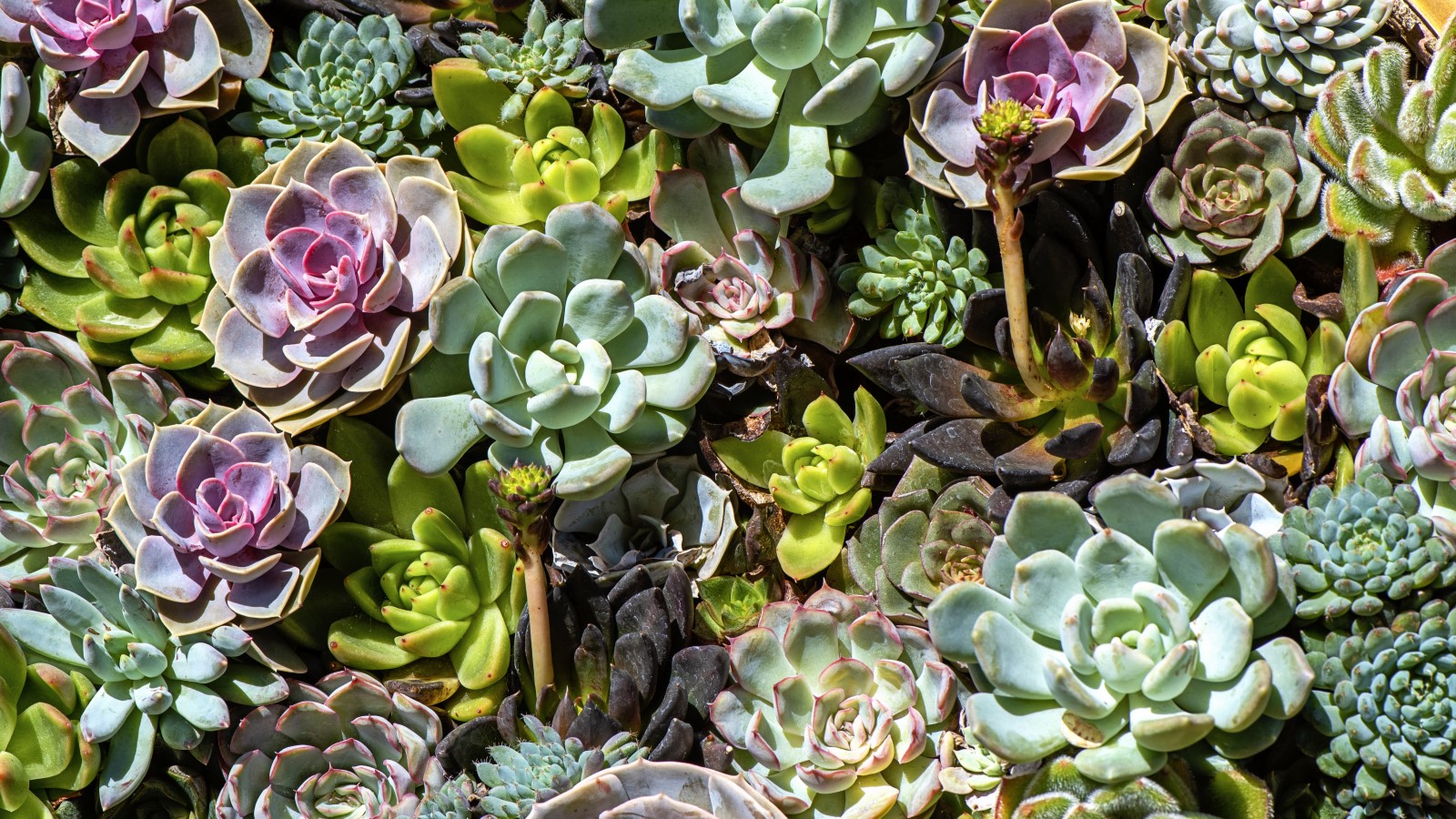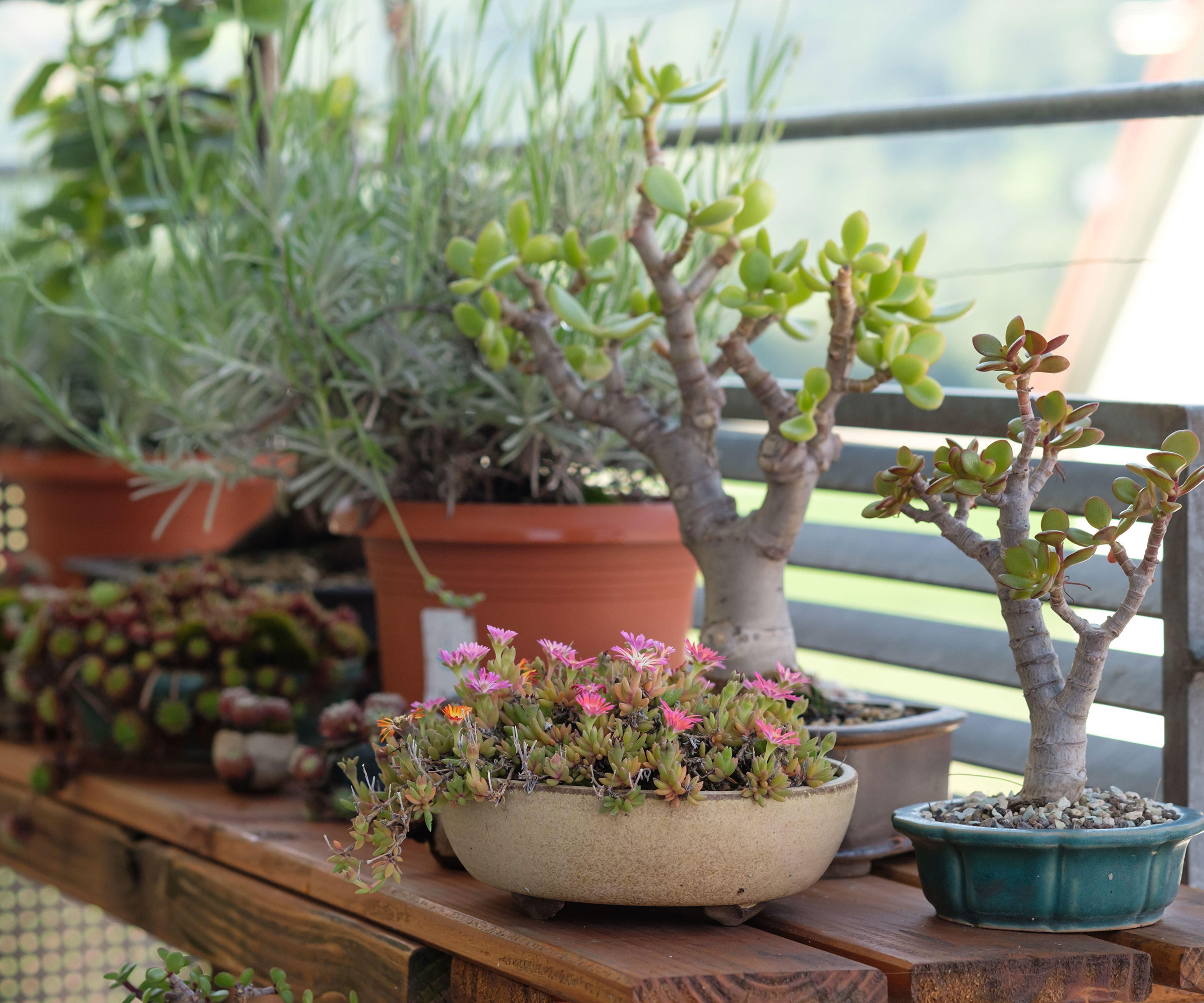
Q. I am growing succulents inside my home, but they have now got leaves that are more of a yellow color than green. Is this a major problem that I should be dealing with and what could it be that is causing my succulents to turn yellow?
A: Succulents have long been hugely-popular houseplants, mainly thanks to how easy they are to grow. It is not all plain-sailing though, as succulents can suffer from problems that can show through yellowing leaves.
If you know how to care for succulents, you likely know that getting the watering correct can be make-or-break to success. Drainage and watering are two areas where issues could leave you wondering, why is my succulent turning yellow?

Why are my succulent leaves turning yellow?
There are several potential reasons why a succulent may start turning yellow. It can happen to all the best types of succulents, but the common culprit is normally watering-related.
When judging when to water succulents, it is important to remember how they are adapted. They store water in their fleshy leaves and giving them excessive moisture than they can hold causes problems as water will sit in the soil. This can cause roots to rot over time and yellow leaves are a common sign of overwatering outdoor plants and indoor ones.
Alex Tinsman, founder and chief editor at How To Houseplant, warns that watering and drainage are the usual suspects responsible for succulent leaves turning yellow. Any potting medium for a succulent needs to be well-draining to help excess water escape from the pot and reduce the likelihood of root problems and yellowing leaves.
‘Succulents, as you might know, are desert natives. They're built for survival in conditions that other plants would find inhospitable. Therefore, sitting in soggy soil can cause their roots to rot, causing a stress response that can turn leaves yellow,’ he says.
‘On the flip side, not watering enough can also be problematic. While succulents can tolerate periods of drought, they still need a drink from time to time. A thirsty succulent might start yellowing as a plea for hydration.’
It is not just watering that can cause yellow leaves and lead you to start wondering, why is my succulent dying? A lack of sunlight can lead succulents to turn yellow and leggy, while any nutrient deficiencies in the soil can leave the plants lacking their usual green and lush color.
Finally, pests can be culprits for leaves turning yellow as the plant gets stressed and displays this in the form of discolored foliage. The leaves will turn from green to yellow as the plant tries to conserve energy and protect itself from the attack.

How do you fix yellow leaves on succulents?
Yellow leaves may look worrying on a plant, however it is often simply a sign that the plant needs a bit of TLC and there are easy ways to help make dying succulents thrive. That is why it is important to monitor plants carefully and not dismiss the sight of yellow leaves. The presence of yellow leaves is a reminder that we may need to fine-tune how you are looking after your indoor plants.
Ash Read, a former professional gardener and founder of Indoor Plants, says that succulents ‘often need a change in their care routine’ to recover from issues such as yellow leaves.
‘The first thing to do is adjust the watering. Make sure the plant's soil is well-draining, and try not to let water sit in the saucer,’ he recommends.
‘If underwatering is the issue, try increasing the frequency of watering but remember – succulents prefer a good soak less often rather than little sips more frequently.’
Getting the watering right is vitally important all year round, but ,when caring for succulents in winter, you especially need to refrain from regular watering. The winter months can be times when the plants are more susceptible to being overwatered, so take care and only water when absolutely required. This may be only once a month during winter.
You may need to consider repotting succulents if the soil mix is not as free-draining as it needs to be for these plants. Any soil for succulents should have a good mixture of potting soil, grit, sand, or perlite, and the pot needs holes in the bottom to give excess water somewhere to go. Repotting can be one way to fix an overwatered plant that has been sitting in very wet soil.
If watering and drainage is not the issue, then nutrient deficiencies can be addressed by the use of a balanced fertilizer specially formulated for succulents. An example of a fertilizer designed to use on the plants is this Succulents & Cactus Plant Food, available at Amazon. A light feed in the spring and summer can help to ensure the plant has all the nutrients it needs for the growing season. If you identify pesky insects causing problems for the plants, there are homemade bug sprays you can use.
FAQs
Should I cut yellow leaves off a succulent?
Dead leaves and yellow leaves are best removed from a succulent. Not only will it lift the overall aesthetic of the plant but it also reduces any risk of attracting more pests or diseases occurring due to dying foliage, especially if those leaves are touching, or sitting on, wet soil.
Ash Read claims that some people like to leave yellow leaves on, but he does not follow that line of thinking. He says: 'Personally, I tend to gently remove yellow leaves as it often helps the plant redirect its energy to new growth.’
A pair of plant snips, such as these available at Walmart, are perfect for precisely removing yellow leaves on a wide range of houseplants.
It can be tough to judge when to water plants, and succulents can be one of the trickier houseplants to get the watering just right with. A good trick when watering plants in containers is to test the soil using your finger to check the moisture levels an inch or so under the surface. This way you can ensure the soil dries out between waterings and reduce the risk of overwatering your succulent.







